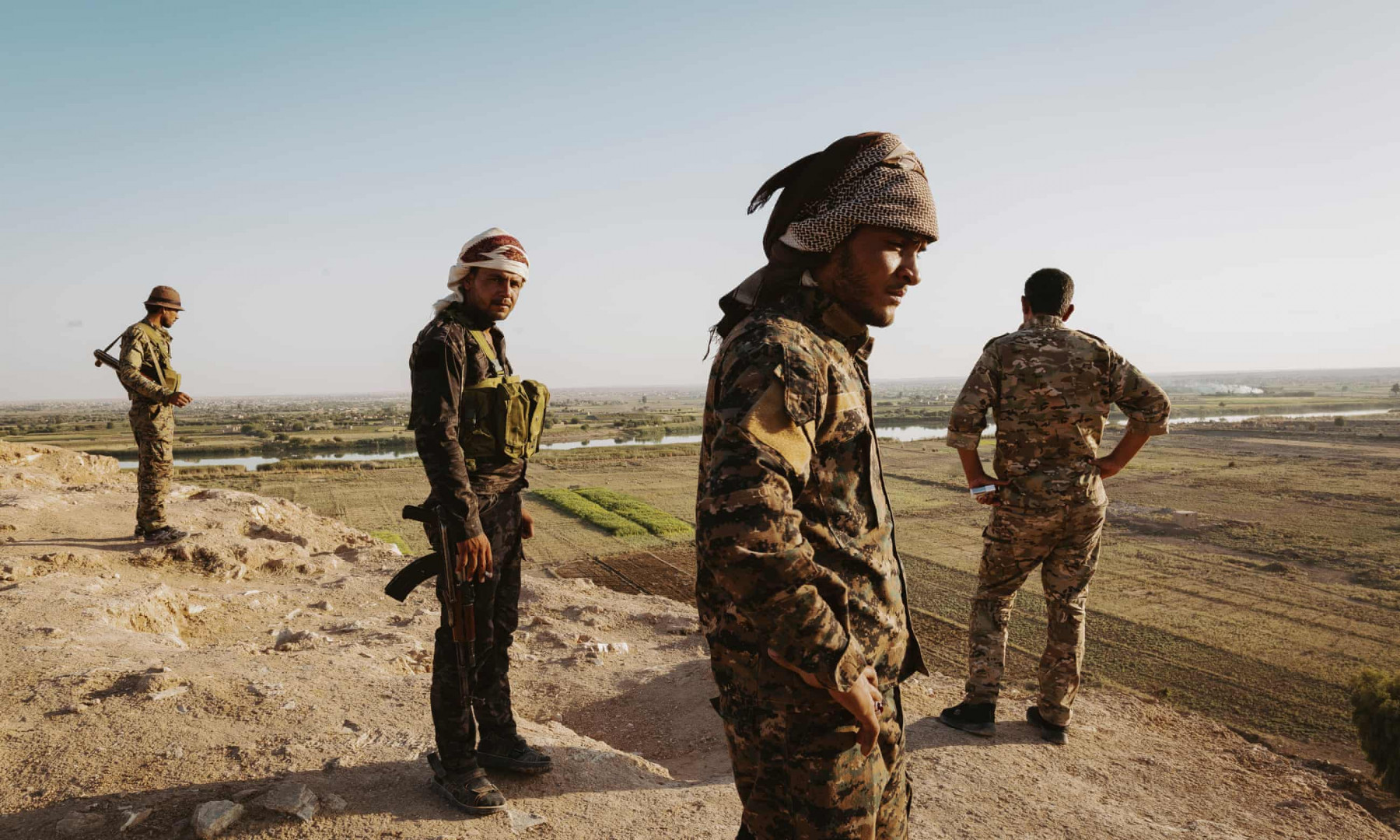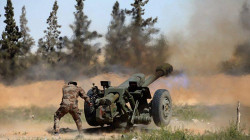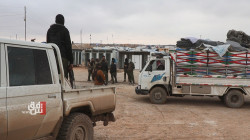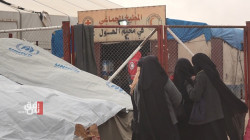Report: Islamic State is rebuilding in Syria, say Kurdish forces

Shafaq News / The US forces had flown across the wasteland of the terrorist group’s last redoubt. Three years ago it was teeming with diehard IS members, but when thousands of holdouts emerged from the decimated town of Baghuz, the war against the so-called caliphate was won, or so it seemed.
“People couldn’t be more wrong,” said Khalil. “[IS] thinks this was a lull, not a loss. And now they’re back to fighting us from the shadows.”
IS and the destruction it wreaked may be slipping from the memory of a relieved world. But where it all began – and seemingly ended – Kurdish forces say a new crisis is building. “An ideology cannot be finished easily,” said Khalil. “They are regrowing and learning to be patient again. And this time they’re doing so on both sides of the river.”
Khalil had been at the vanguard of the fight against IS since 2014, leading battles in Kobane, Raqqa and finally the apparent last stand of the terrorist group in the decimated town of Baghuz seven years later. Like most Kurdish leaders, he had celebrated the demise of IS. But his unease remained and has grown ever since. “Every day our anti-terror units are doing at least one operation,” he said. “Yesterday the Americans killed three people and today the French did an attack. The targets are all IS people and they’re all in the towns near us.”
The raid that rankled with Khalil had been launched from Iraq and – unusually – had not been coordinated with the Kurdish-led alliance raised by Washington, the Syrian Democratic Forces (SDF), which has remained a spear tip of the residual Isis fight. “If the Americans are going to fly in to do raids, we need to know about it,” Khalil shouted down the line to another senior officer in the nearby city of Hasakah. “We have been partners for all these years, and now is not the time to go it alone.
“But at least it was a success,” he said. “The three they killed were important.” Two US helicopters taking off from a nearby landing pad drowned out the end of his call “They’re going looking [for IS],” he shouted. “There’s a lot to see.”
Also on the hunt are Kurdish troops stationed in Baghuz, about two hours from the Kurdish base. In early 2019 this town was a scene of medieval savagery, where thousands of fighters, women and children had somehow emerged from a series of pulverised districts. Few remnants remain of IS’s last stand here and its last residents, many of whom remain in detention centres, or prisons, across north-east Syria.
“We have 10,000 in our prisons and another 60,000 in the camps,” said Angin Afrin, an SDF leader. “The numbers of people that came from here were amazing.” So too is the number of bodies buried under the soil of Baghuz. “There would be at least 5,000 and that’s a low estimate,” said Afrin. “If you walk on a field, you’ll be walking over corpses.”
Only a few signs of the IS era have survived. Three of the group’s black banners are still painted on to a wall in front of two rusted and upturned cars. And houses pockmarked by shells and shrapnel stand among new grey homes assembled from the labours of bustling brickyards at the entrance to the town.
On a ridge at the other side of Baghuz, where vanquished fighters and their families surrendered to Kurdish forces and boarded buses that took them to detention, soldiers peered into crevices and caves, looking for loot that the terrorist group’s fleeing members may have stored. “There could be explosives in there, Ahmed, be careful,” one soldier shouted to his friend. “There are so many of these hiding spots,” said another. “This mountain will be full of gold.”
Where, or whether, IS hid its valuables as it lost control of its land is an increasing source of curiosity for SDF leaders, who feel that the price they paid for defeating the terrorist group has so far outweighed any dividends.
There are, however, some exceptions. On several occasions in the past year, the SDF has been tipped off about buried loot and sent teams to find it. “We found $50m buried on an island in the Euphrates,” said Syamend Ali, a media officer for the YPG – the main fighting force within the SDF. “There have been other hunts for treasure, but they have not been as successful.”
In the nearby city of Hasakah, Mazloum Abdi, the overall SDF commander, who has led the IS fight since 2014, said IS could again rise to threaten the global order.
“We fought them so hard for so long and we want to ensure that they never become strong again,” he said. “Their leadership is reassembling. We are still arresting many of them, but it’s hard to keep up. In towns and villages they are often standing over people. There is a lot of threatening going on, and the communities are not yet strong enough to defy them.
“In Deir ez-Zor, and in Iraq in Anbar province and in Hmeimim mountains, IS has a coordinated presence. We can’t take our eyes off this. And nor can we ignore the camps.”
Kurdish officials say their primary concern, for now, remains Deir ez-Zor province, an area that remains nearly impossible to tame even with the regular contribution of US and French special forces. With US forces due to leave Iraq and the debacle of the Afghanistan withdrawal still vivid, there are increasing concerns that Washington may also order the departure of its troops from Syria.
“The departure from Iraq will leave our forces exposed in Syria,” said a US official. “They won’t have the depth of the airbases in Baghdad and Erbil. That makes for a reduced footprint, for sure.”
Source: The Guardian
Shafaq News / The US forces had flown across the wasteland of the terrorist group’s last redoubt. Three years ago it was teeming with diehard IS members, but when thousands of holdouts emerged from the decimated town of Baghuz, the war against the so-called caliphate was won, or so it seemed.
“People couldn’t be more wrong,” said Khalil. “[IS] thinks this was a lull, not a loss. And now they’re back to fighting us from the shadows.”
IS and the destruction it wreaked may be slipping from the memory of a relieved world. But where it all began – and seemingly ended – Kurdish forces say a new crisis is building. “An ideology cannot be finished easily,” said Khalil. “They are regrowing and learning to be patient again. And this time they’re doing so on both sides of the river.”
Khalil had been at the vanguard of the fight against IS since 2014, leading battles in Kobane, Raqqa and finally the apparent last stand of the terrorist group in the decimated town of Baghuz seven years later. Like most Kurdish leaders, he had celebrated the demise of IS. But his unease remained and has grown ever since. “Every day our anti-terror units are doing at least one operation,” he said. “Yesterday the Americans killed three people and today the French did an attack. The targets are all IS people and they’re all in the towns near us.”
The raid that rankled with Khalil had been launched from Iraq and – unusually – had not been coordinated with the Kurdish-led alliance raised by Washington, the Syrian Democratic Forces (SDF), which has remained a spear tip of the residual Isis fight. “If the Americans are going to fly in to do raids, we need to know about it,” Khalil shouted down the line to another senior officer in the nearby city of Hasakah. “We have been partners for all these years, and now is not the time to go it alone.
“But at least it was a success,” he said. “The three they killed were important.” Two US helicopters taking off from a nearby landing pad drowned out the end of his call “They’re going looking [for IS],” he shouted. “There’s a lot to see.”
Also on the hunt are Kurdish troops stationed in Baghuz, about two hours from the Kurdish base. In early 2019 this town was a scene of medieval savagery, where thousands of fighters, women and children had somehow emerged from a series of pulverised districts. Few remnants remain of IS’s last stand here and its last residents, many of whom remain in detention centres, or prisons, across north-east Syria.
“We have 10,000 in our prisons and another 60,000 in the camps,” said Angin Afrin, an SDF leader. “The numbers of people that came from here were amazing.” So too is the number of bodies buried under the soil of Baghuz. “There would be at least 5,000 and that’s a low estimate,” said Afrin. “If you walk on a field, you’ll be walking over corpses.”
Only a few signs of the IS era have survived. Three of the group’s black banners are still painted on to a wall in front of two rusted and upturned cars. And houses pockmarked by shells and shrapnel stand among new grey homes assembled from the labours of bustling brickyards at the entrance to the town.
On a ridge at the other side of Baghuz, where vanquished fighters and their families surrendered to Kurdish forces and boarded buses that took them to detention, soldiers peered into crevices and caves, looking for loot that the terrorist group’s fleeing members may have stored. “There could be explosives in there, Ahmed, be careful,” one soldier shouted to his friend. “There are so many of these hiding spots,” said another. “This mountain will be full of gold.”
Where, or whether, IS hid its valuables as it lost control of its land is an increasing source of curiosity for SDF leaders, who feel that the price they paid for defeating the terrorist group has so far outweighed any dividends.
There are, however, some exceptions. On several occasions in the past year, the SDF has been tipped off about buried loot and sent teams to find it. “We found $50m buried on an island in the Euphrates,” said Syamend Ali, a media officer for the YPG – the main fighting force within the SDF. “There have been other hunts for treasure, but they have not been as successful.”
In the nearby city of Hasakah, Mazloum Abdi, the overall SDF commander, who has led the IS fight since 2014, said IS could again rise to threaten the global order.
“We fought them so hard for so long and we want to ensure that they never become strong again,” he said. “Their leadership is reassembling. We are still arresting many of them, but it’s hard to keep up. In towns and villages they are often standing over people. There is a lot of threatening going on, and the communities are not yet strong enough to defy them.
“In Deir ez-Zor, and in Iraq in Anbar province and in Hmeimim mountains, IS has a coordinated presence. We can’t take our eyes off this. And nor can we ignore the camps.”
Kurdish officials say their primary concern, for now, remains Deir ez-Zor province, an area that remains nearly impossible to tame even with the regular contribution of US and French special forces. With US forces due to leave Iraq and the debacle of the Afghanistan withdrawal still vivid, there are increasing concerns that Washington may also order the departure of its troops from Syria.
“The departure from Iraq will leave our forces exposed in Syria,” said a US official. “They won’t have the depth of the airbases in Baghdad and Erbil. That makes for a reduced footprint, for sure.”
Source: The Guardian





